“Alike” but Different: Building a Brand in the Wake of Its Successful Launch
// By Stacy Beers and Claire Hovis //
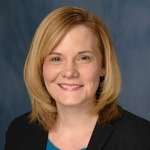
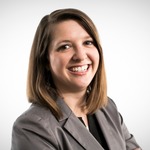 When a new brand takes hold as intended, one tough job is over—but another has already begun. How soon is too soon to change gears from brand establishment to a new phase of promotion? Will new messages come across as mixed messages and muddy the clear impression you’ve worked so hard to make? One major health system found the right balance with a constructive twist on its launch theme. The people across campaign phases worked in pairs, while the connection between them evolved.
When a new brand takes hold as intended, one tough job is over—but another has already begun. How soon is too soon to change gears from brand establishment to a new phase of promotion? Will new messages come across as mixed messages and muddy the clear impression you’ve worked so hard to make? One major health system found the right balance with a constructive twist on its launch theme. The people across campaign phases worked in pairs, while the connection between them evolved.
The hospitals and primary care and specialty practices of UF Health aren’t new in their Florida market. But their name is. Before 2013, the health system was known as UF&Shands. That ampersand joined the six health-related colleges, research centers, and institutes of the University of Florida Health Science Center with the private, not-for-profit Shands family of teaching hospitals where UF physicians practice.
The old brand wasn’t broken, but it wasn’t set up to handle the challenges that were coming: more competition, changing expectations from patients, increased consolidation, and internal division among the system’s own employees. UF&Shands needed to redefine and build its brand for long-term success and market differentiation. In looking forward, the health system collaborated with Capstrat, a strategic communications agency, to help shape a new strategy.
Months of qualitative and quantitative research revealed that patients didn’t understand the connection between UF and Shands. More important, they didn’t understand why the relationship between the system’s two halves should mean anything to them. The system’s relationship with the university meant the care people received in the system’s hospitals and practices was enriched by leading-edge medical research, but the value of that was lost on the public. The colleges of UF’s Health Science Center were contributing to medical research and patient care on a national level. A new, single, university-centric name could help make that value part of the conversation.In May 2013, UF&Shands relaunched itself internally and externally as UF Health—a united entity focused on using homegrown research and insight to improve outcomes for patients who visited the academic health center. The overall strategy was to embrace what UF Health excelled at.
Invisible Connections
The campaign to establish the new brand led with what differentiates UF Health—bench-to-bedside research advances. The challenge was how to make this research tangible. If patients think about research at all, they think about it as something that happens somewhere else, behind the scenes, with results that take years to emerge. UF Health’s challenge was to capture the direct relationship between research and patient-centered care that is possible only at an academic health center. The people working on research might be doing it behind the scenes—but they’re doing it here, now, to improve care today. And any one of them might be your neighbor or a friendly face you see around town.
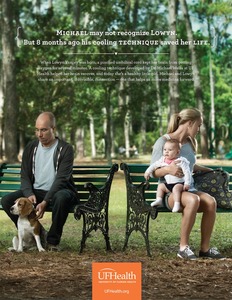 To capitalize on this concept, the health system introduced the state of Florida to pairs who might never meet each other: Lowyn and Michael. Sydney and Mark. Norman and Dominick. Cherise and John. One person in each pair is a UF Health patient. The other is a UF researcher. Each pair is joined by an invisible, life-changing connection. For example, Lowyn avoided a brain injury at birth because of a cooling-blanket technique Michael perfected. When they pass one day in the park, they have no idea what binds them. But we do.
To capitalize on this concept, the health system introduced the state of Florida to pairs who might never meet each other: Lowyn and Michael. Sydney and Mark. Norman and Dominick. Cherise and John. One person in each pair is a UF Health patient. The other is a UF researcher. Each pair is joined by an invisible, life-changing connection. For example, Lowyn avoided a brain injury at birth because of a cooling-blanket technique Michael perfected. When they pass one day in the park, they have no idea what binds them. But we do.
From a distance, medical research can appear cold and clinical. By using human stories to remove that distance, UF Health helped viewers link its research and patient care in an emotional way. It also helped boost consumers’ awareness of its brand, the first step on a progression that eventually leads to preference, utilization, and even advocacy.
The Results to Date
The “Invisible Connections” campaign used TV, radio, print, outdoor, cinema, and digital advertising. No one expected awareness or preference for the new brand to solidify overnight. That often takes years—and more than one campaign. But 18 months after launch, the results were promising.
In a large-scale brand tracking study, unaided awareness across UF Health’s 14-county market grew 11.7 percent from 2013 to 2015. In parallel, a smaller monthly survey conducted by the National Research Corporation demonstrated that awareness rose 3.9 percentage points year over year.
UF Health also saw an increase in preference, utilization, and image during a period when the competition’s numbers remained flat. Most important, the system saw an 8.89 percent increase in the number of unique patients who visited one of the system’s facilities after not having visited UF Health from 2012 to 2014.
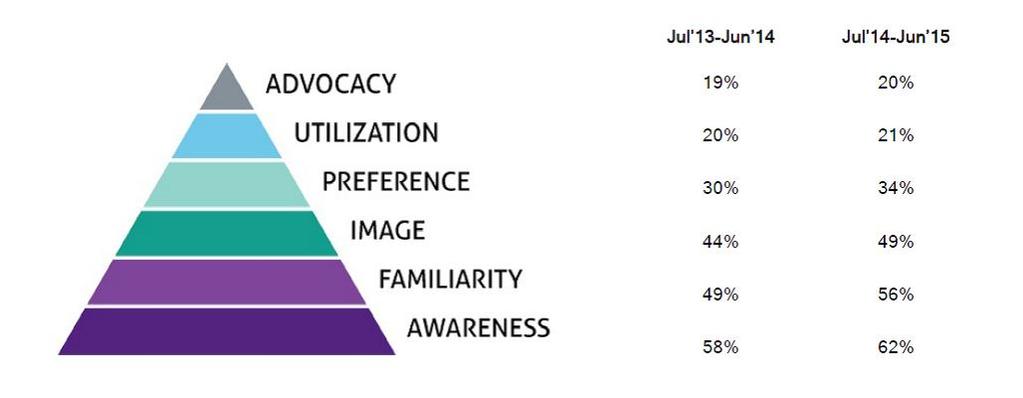
No Two Alike
The aim for 2015 was for UF Health to build on those positive results—to keep moving “patient consumers” up the brand pyramid toward the day they might become active advocates for the system. But it would be easy to misstep.
However robust its early growth, a brand that’s still in its cradle is a sensitive commodity. If you leave it alone for too long, it can lose momentum, but if you inject a new direction, you might confuse consumers who are only just becoming comfortable with what you’ve created. That was the challenge UF Health faced in designing its first post-launch phase of brand building.
So the UF Health and Capstrat teams asked themselves, “How can we tell our story of superior outcomes in a new, creative way and create a stronger connection between the patient and the health care provider?” The success of the phase one “Invisible Connections” effort came in part from a creatively distinct campaign concept. Phase two would stay the course—continuing to focus on the superior clinical outcomes that result from UF Health’s commitment to research. That core message needed a creative wrapper that was identifiably related to the phase one message without being a simple rehash.
The familiar structure was the idea of “two.” The new wrinkle was individualized treatment. Moving away from invisible pairs, the new campaign used a visual marker (one that would portray well in a 30-second commercial) to demonstrate how care at UF Health matched each person’s needs: Life gives all of us scars. No two are alike. But no matter what your challenge or your path to recovery, UF Health is the common factor. And sometimes, even a scar can be something to cherish.
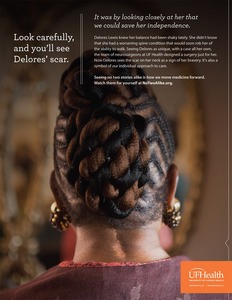
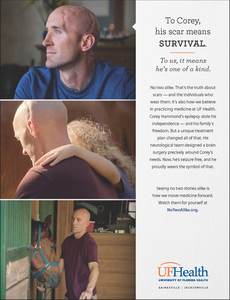
- Rebekah faced a deadly bone cancer—and a probable arm amputation to remove it. But UF Health doctors and researchers performed a first-of-its-kind surgical procedure on a patient of her age (22), ultimately saving her arm. Rebekah can now proudly carry her 3-year-old son.
- Corey endured a scooter accident that left him with seizures that were worsening with time. Medicines weren’t working. A team of UF Health epilepsy experts performed brain surgery to remove the parts of his brain causing the seizures. The treatment path was to ultimately help Corey regain control of his life. For Corey, the scar represents survival.
- Delores had difficulty walking a straight line due to a car accident that injured her spine. Medical imaging revealed she needed surgery. Without a perfectly designed spinal surgery—and soon—Delores risked numerous other health problems. The UF Health Jacksonville team of neurosurgeons repaired her spine and kept the many blood vessels and nerves around the spine intact to avoid other damage. Delores is now back to her favorite activities. Her scar shows that she’s tough.
- Shawnna was used to taking care of others. But despite her active and healthy lifestyle, a heart attack at the gym landed the UF Health Jacksonville nurse in the Emergency Room. To prevent further complications, a surgeon at UF Health inserted a stent through her wrist, leaving only a tiny scar. She’s now back in the E.R., caring for others.
The “No Two Alike” campaign presented a creative challenge related to finding and screening patients. Each patient not only needed to receive treatment at UF Health but also needed to have a physical reminder— a visible scar—to represent his or her unique treatment plan. The creative concept dictated which patients to feature. It also required a more rigorous identification and screening process.
The fully integrated campaign maintained continuity with the earlier “Invisible Connections” campaign by preserving the tagline “moving medicine forward.” Currently, the campaign is running across TV, radio, print, outdoor, digital, Pandora, and social media. All media are linking back to a campaign microsite, NoTwoAlike.org, where users can read more about each patient’s journey or view additional videos featuring family members, doctors, and nurses who all have a different perspective about the experience. So far, the campaign is keeping the system’s target audience in UF Health’s 14-county market engaged. The site bounce rate is significantly lower than industry averages for paid media (less than 20 percent), and users are spending well over a minute exploring additional content.
The UF Health marketing team is extending the individualized treatment theme into service line marketing efforts that include oncology, cardiology, surgical services, transplants, pediatrics, congenital heart defects, and orthopaedics. Continued monthly surveys and campaign metrics are monitoring brand performance. The team is making real-time adjustments to the media spend based on that input.
Lessons Learned
For health systems embarking on a rebranding initiative, or those currently going through the process, there are several strategies that UF Health employed that helped advance the process and contributed to the success they have enjoyed so far:
- Don’t try to be something you’re not. The UF Health brand strategy is built on the qualities that the health system derives from its dual foundation in academics and medical practice. And while the health care system is working to improve in a number of areas (for example, patient experience), it will remain vital for external communications to focus on what UF Health delivers best—excellent clinical outcomes.
- Set internal expectations for every step in the process, including the long-term goals and milestones. The health system’s executive leaders were involved in major branding decisions from the name change to the advertising concept selection in both phases, and they continue to participate in quarterly reviews around how the brand is performing. Just as important as their initial support is their understanding that building a brand takes significant time, resources, and investment. It helps when they can see results like the increase in patient utilization that happened within 18 months of introducing UF Health to the market.
- Stay the course with your brand position and message, even as new campaigns are developed. Creating phase two of a brand campaign requires special consideration around how the message will be received—and whether it builds on the current market success. Through focus group testing of different concepts, the UF Health team was able to determine whether consumers connected the new campaign to what they had learned about UF Health.
Stacy Beers is the Director of Marketing at University of Florida Health in Gainesville, Florida, the Southeast’s most comprehensive academic health center, where she leads the system branding and marketing efforts for the six health colleges of the University of Florida.
Claire Hovis is a Vice President, Account Director at Capstrat, a strategic marketing communications agency in Raleigh, North Carolina. She specializes in health care marketing in the hospital system, pharmaceutical, and insurance industries.
